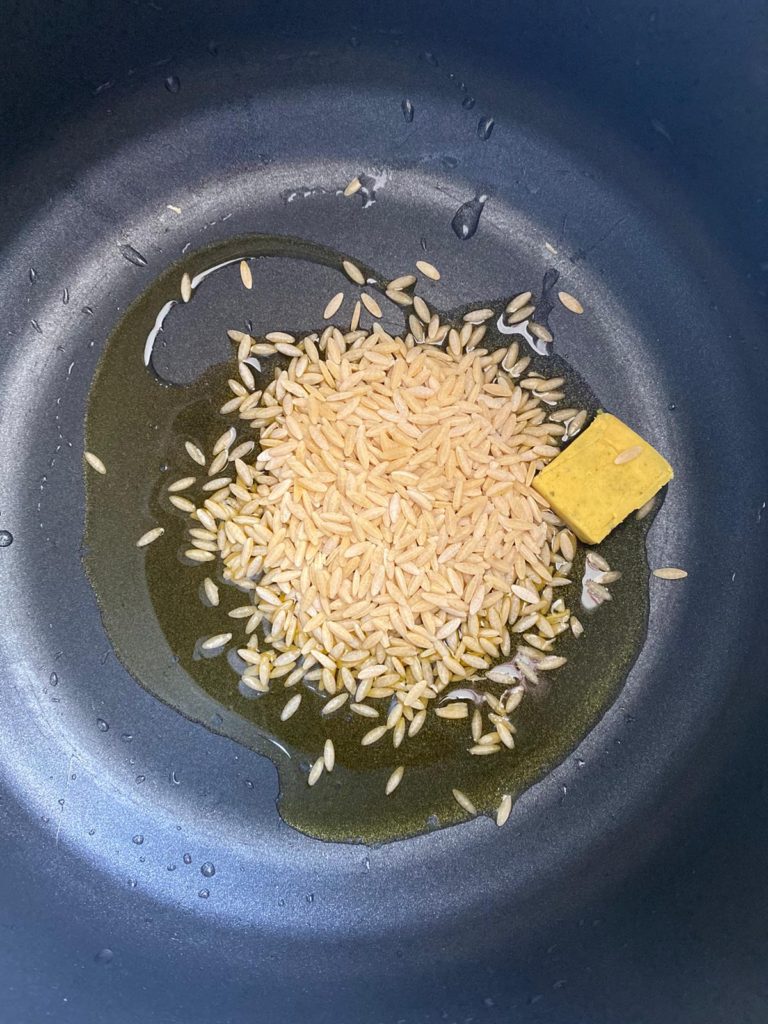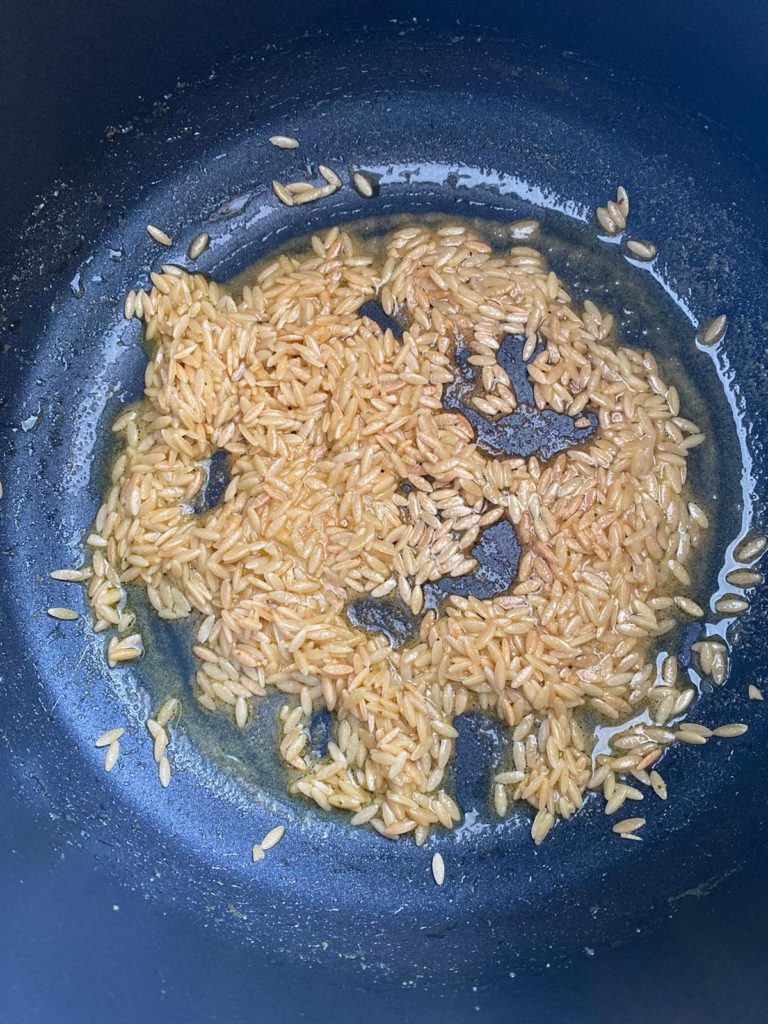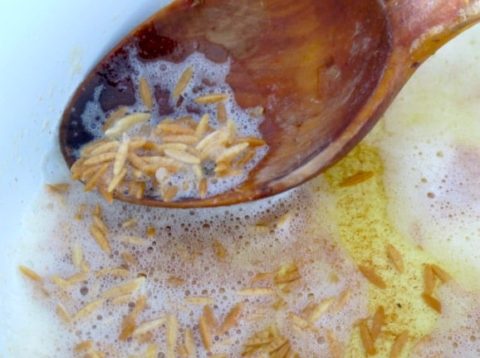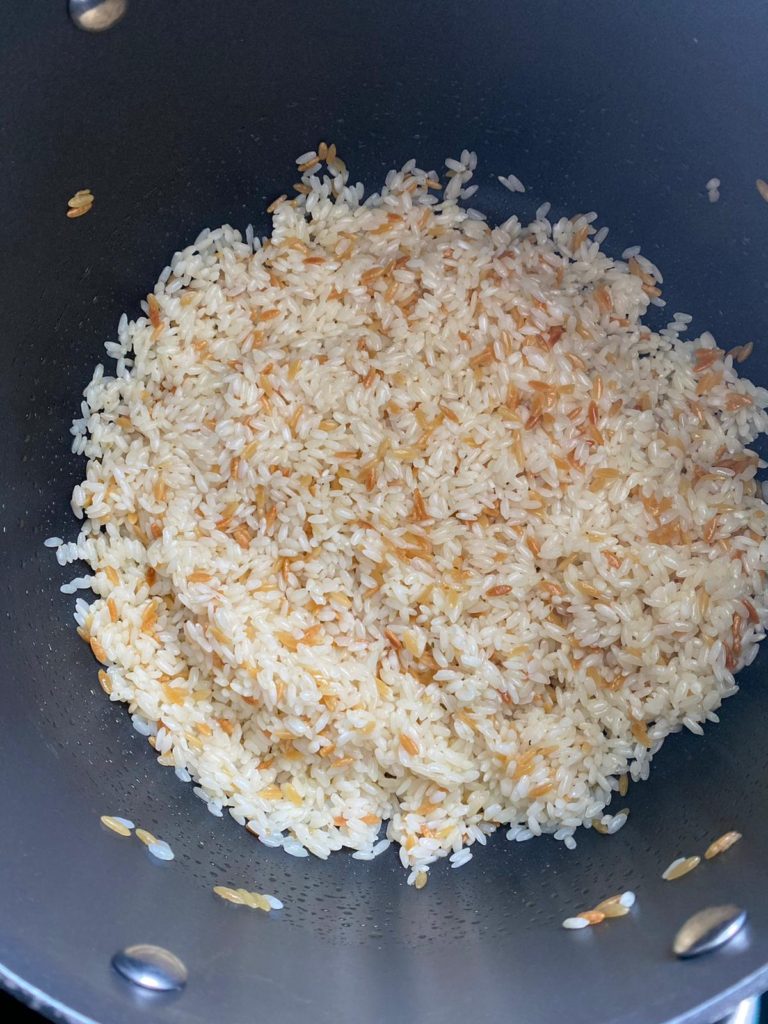I can not think of a Turkish kitchen where a pilav (Turkish for pilaf) is not cooked at least once a week unless they are on a strict diet. There are few basic tips and tricks about how to prepare a good rice pilaf. A good pilaf means it is cooked enough; there are no hard parts in the rice. It is not sticky; it does not stick to your teeth or to the serving spoon. There is even a saying that “if one cooks a good pilaf; he/she can cook anything”.
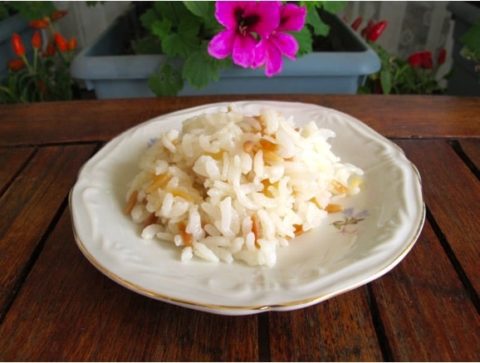
History of Pilaf
The history of rice is as old as human history. Archaeological records indicate that the first domestication of rice took place 8,500 years ago in China. Rice first spread to all Far Asia and then to Europe and America.
In both the Seljuk and Ottoman periods, pilaf became the king of the tables. Pilaf feasts were held at all weddings, associations and feasts. Although pilaf was a luxury for the common people in the beginning, later on it became a stable part of all the kitchens. It is said that there were around 80 different pilaf versions cooked in the palace kitchens in those days, nowadays the number might be even more.
How to choose the right rice?
You should buy rice that is not broken, somewhat fat. In Turkey I prefer the baldo and Osmancik type of white rice, in London, I can still find baldo in Turkish markets.
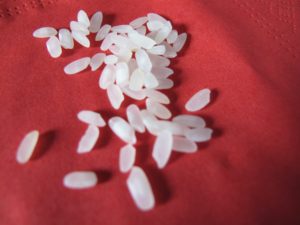
How to cook rice pilaf?
- Place a measured amount of rice in a pot and cover with water at least half an hour before starting to cook. The amount of water you use at this stage is not important as you will discard it anyway. I prefer to use the pot that I will cook in later, not to make additional mess. The cup or container that you use to measure the rice should have a handle because you will use it again to add boiling water while cooking and it will be easier to hold.
- Cook the pilaf half an hour before serving, this time frame will let you cook and rest the pilaf before serving.
- When the time has come to cook, after at least half an hour soaking, rinse the rice under running water. Use a colander to drain the water, do not use your hands to wash the rise, as you might break the rice. Just let the water flow down, gently shake the colander. Continue until the water leaking down under the colander is no more white with starch. Let the rice sit in the colander to get rid of the final drops of water while moving on the cooking.
- I advise to use vermicelli/orzo to make sure that the rice does not stick to each other. You can use any shape; elips, thin, round, star or alphabet shaped.
- Add a tablespoon or two of olive oil and a tablespoon of butter to a non stick pot. Once the butter is melted add the orzo and the salt. Cook until the the orzo is golden brown.
- If using a chicken tablet add it together with the orzo and make sure it completely dissolves. Skip adding the chicken tablet if you will be adding chicken stock.
- Then add the rice that is well drained and cook until no water is left and the rice turns shiny.
- Then add boiling water. Mix only once and cover the lid.
- If you have chicken stock available, of course it will be much better. Do not forget to measure the chicken stock too when adding. You can use half chicken stock and half water if chicken stock is not enough.
- The rice water ratio depends on the type of rice you are using. For baldo type this amount is roughly 1:1¾. That is use 1 cup of rice and add 1¾ boiling water when cooking.
- Once the water comes to a boil again, reduce the heat to minimum and cook until the water is completely absorbed by the rice.
- Taste the rice, if it still has a stiff part in the middle add 1-2 tablespoons of boiling water and cook for 1-2 minutes more.
- If the rice is ready, close the heat and let the pilaf rest for 5 minutes. Then lightly mix and serve while still warm.

Orzo olive oil and chicken cube 
Saute the Orzo 
Preparing Rice Pilaf with Orzo 
Cooking Rice pilaf with Orzo
Making it vegan: You can leave out the chicken tablet/stock and replace the butter with a vegan version and turn this recipe into a vegan one.
Making it gluten free: You can leave out the orzo and make it gluten free.
Not very probable but you can use left overs to make other dishes such as a Meadow Soup with yogurt or Meatballs with Rice.
This Turkish rice pilaf recipe is the most basic, plain one. My son likes it with plain yogurt, my mum with ketchup, my husband with boiled dry chickpeas and I like it with some Shepherd’s Salad.
If you like rice pilaf, try making it with tomatoes next time with Tomato Pilaf recipe.
I hope you will try and find out what is your favorite.
Rice Pilaf with Orzo
Ingredients
- 1 cup rice
- 2 tablespoons olive oil
- 1 tablespoons butter
- 3 tablespoons orzo
- 1¾ cup water boiling
- 1 tablet chicken stock optional
- 1 teaspoon salt
Instructions
- Choose rice is that is not broken, somewhat fat – preferrably "baldo" type. Put the rice in a bowl and cover it with boiling water. This must be done at least half an hour before cooking. Then thoroughly wash the rice, until the water is no longer white below the colander. Rinse the rice gently – do not scrub – or else the rice might break. Set aside the rice while still in the colander to get rid of the last drips of water and move on to the next step.
- Use a wide, but not too tall pot. Add the olive oil and the butter. Cook with medium heat until the butter melts. Keep an eye so that the butter does not burn or change color.
- Add the orzo. Saute until golden brown.
- If you want to add a chicken tablet now is the correct time – make sure it dissolves thoroughly. If you have chicken stock, it is better, replace with the water and the chicken tablet.
- As soon as the orzo is ready, add the rice and the salt. Cook stirring until the rice becomes shiny.
- Add the boiling water to measure. Stir only once and close the lid. You should not stir again until serving.
- Once the water boils lower the heat to minimum.
- When the water is absorbed taste the rice, but do not stir yet. If the rice is not cooked enough add 2-3 tablespoons of hot water, cook for a while longer.
- When the rice is cooked, your pilaf is ready; close the heat.
- Place a paper towel on the pilaf pot and cover the lid again. This is to prevent the water drops of the lid fall back on the rice. Wait for 5-10 minutes, so the pilaf rests and serve after stirring once.
Notes
Interested in more recipes? Subscribe to my newsletter and follow along on Facebook, Pinterest and Instagram for all of the latest updates.
Recommended Products
As an Amazon Associate and member of other affiliate programs, I earn from qualifying purchases. Please view my disclaimer page for more information.

